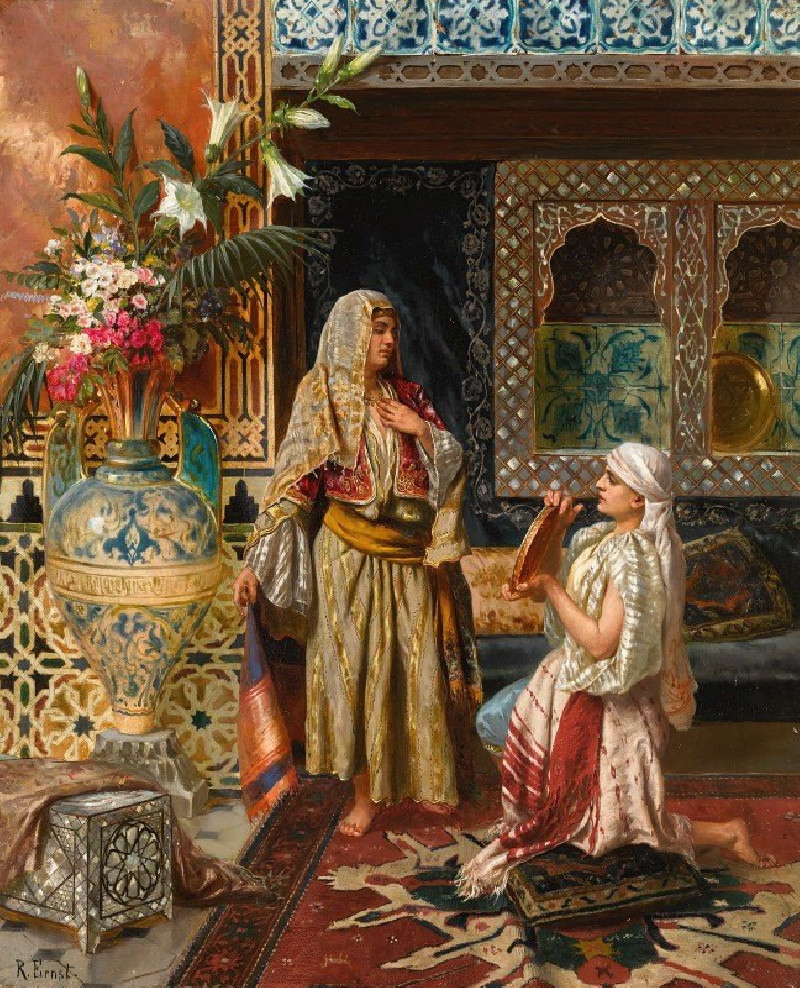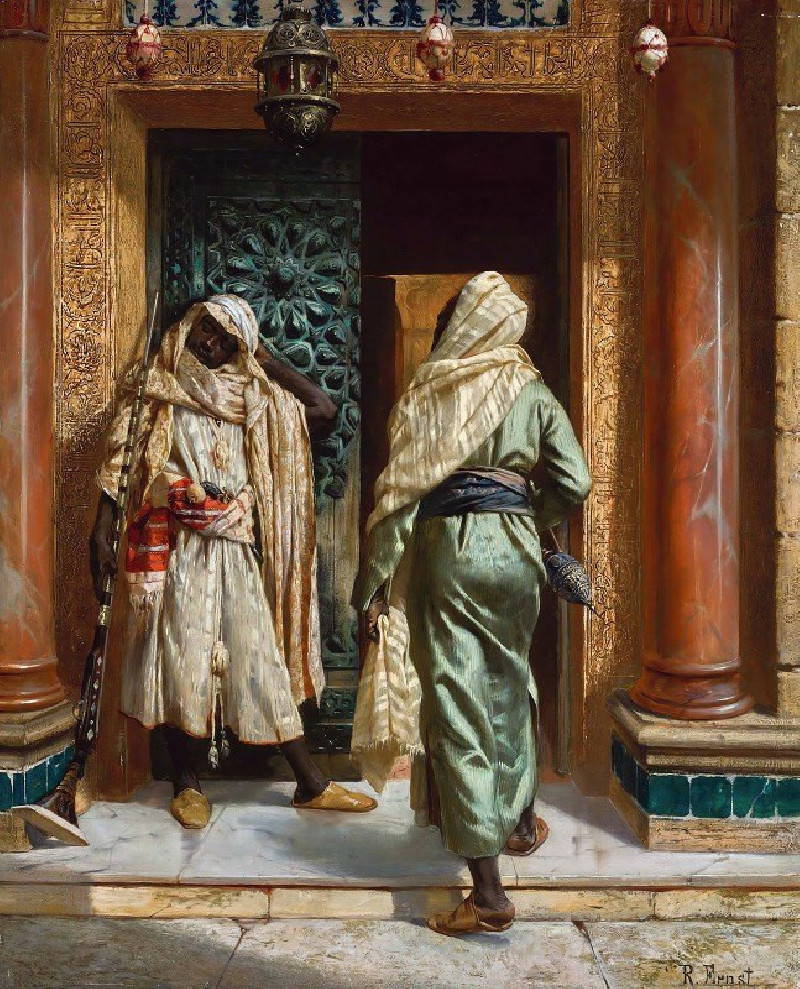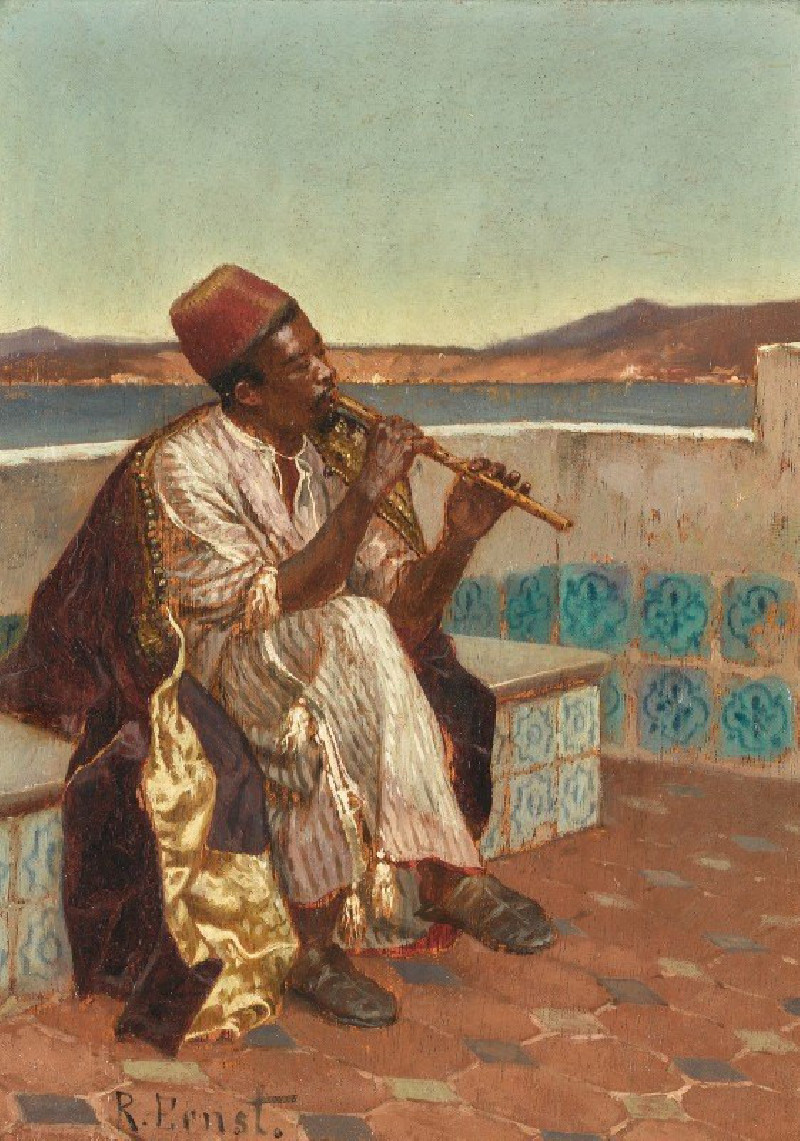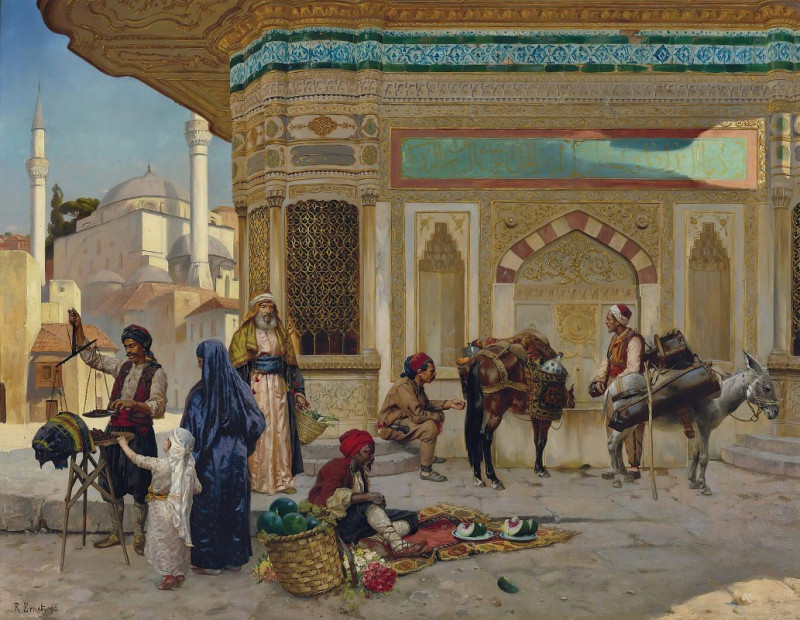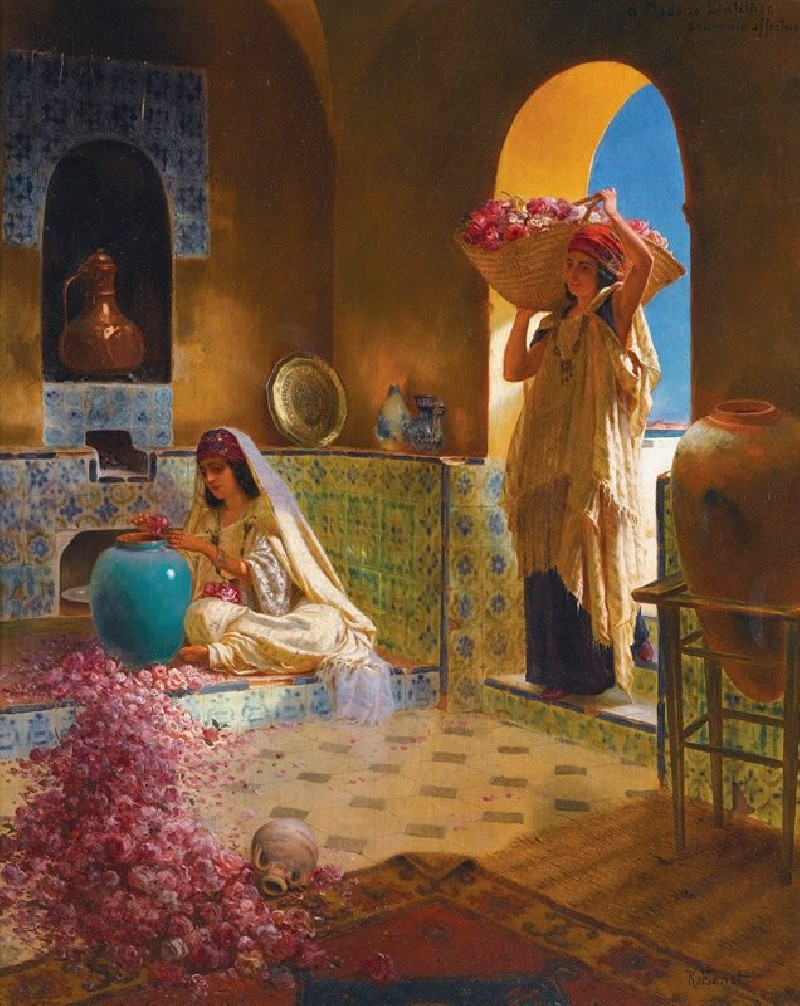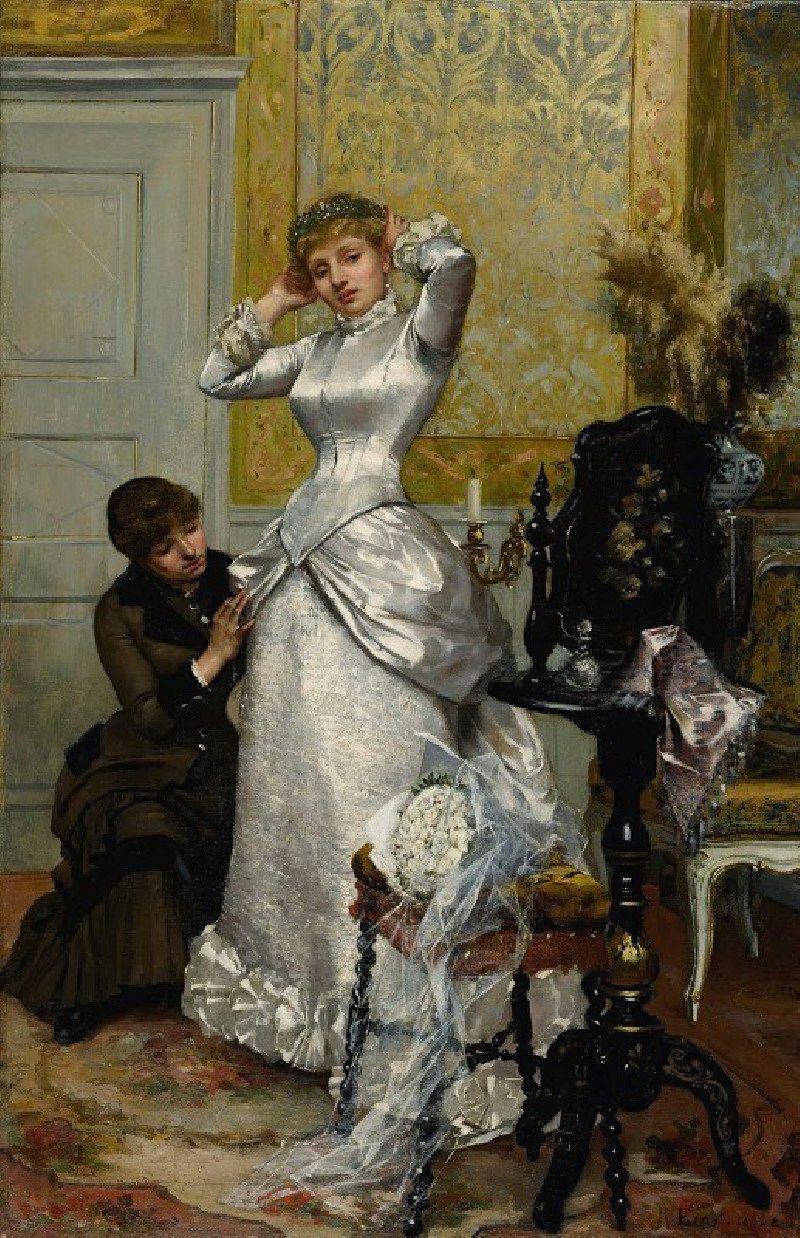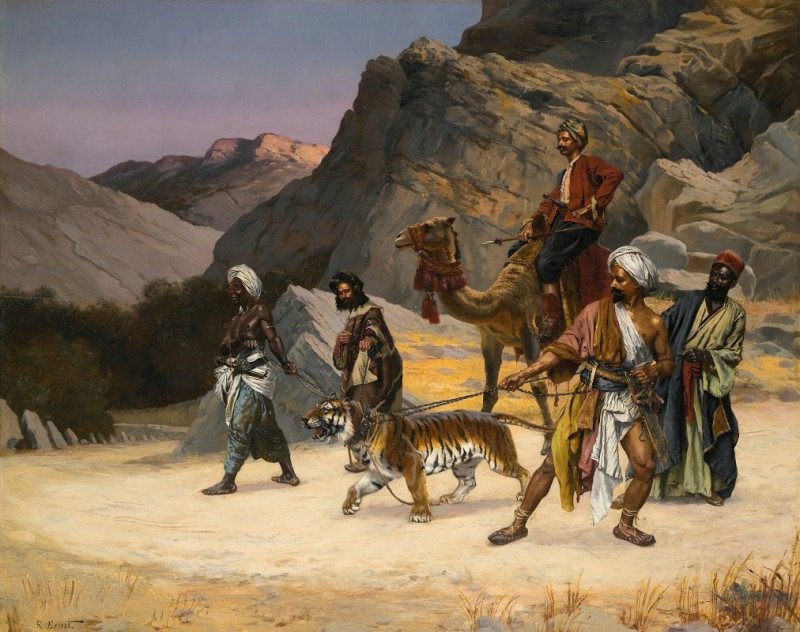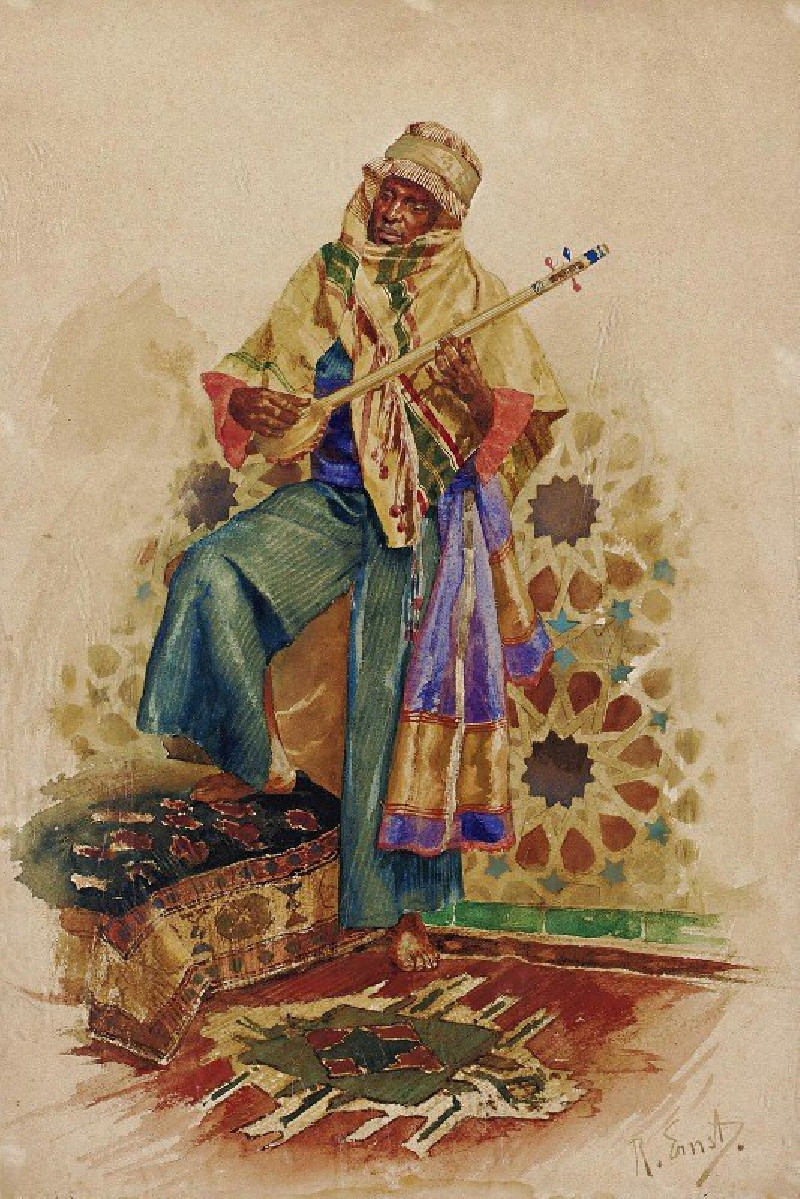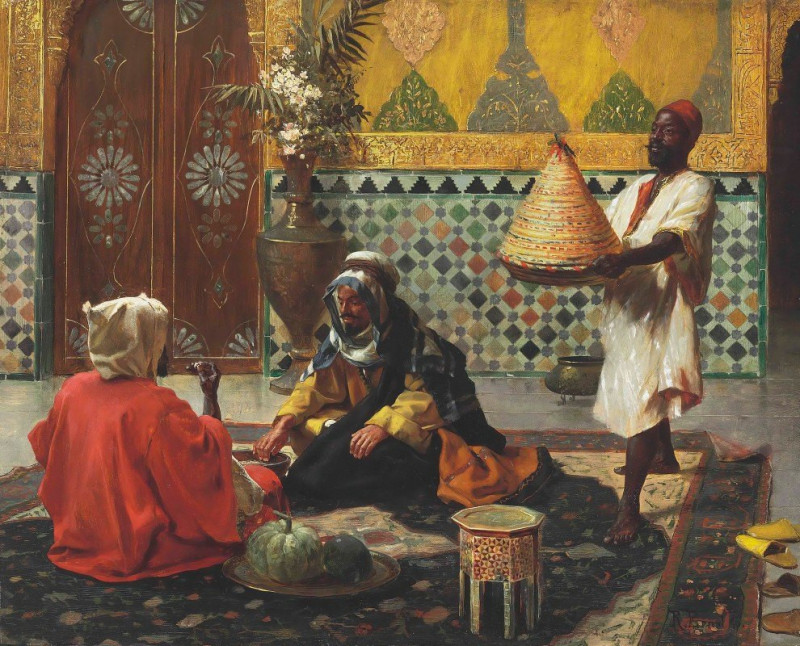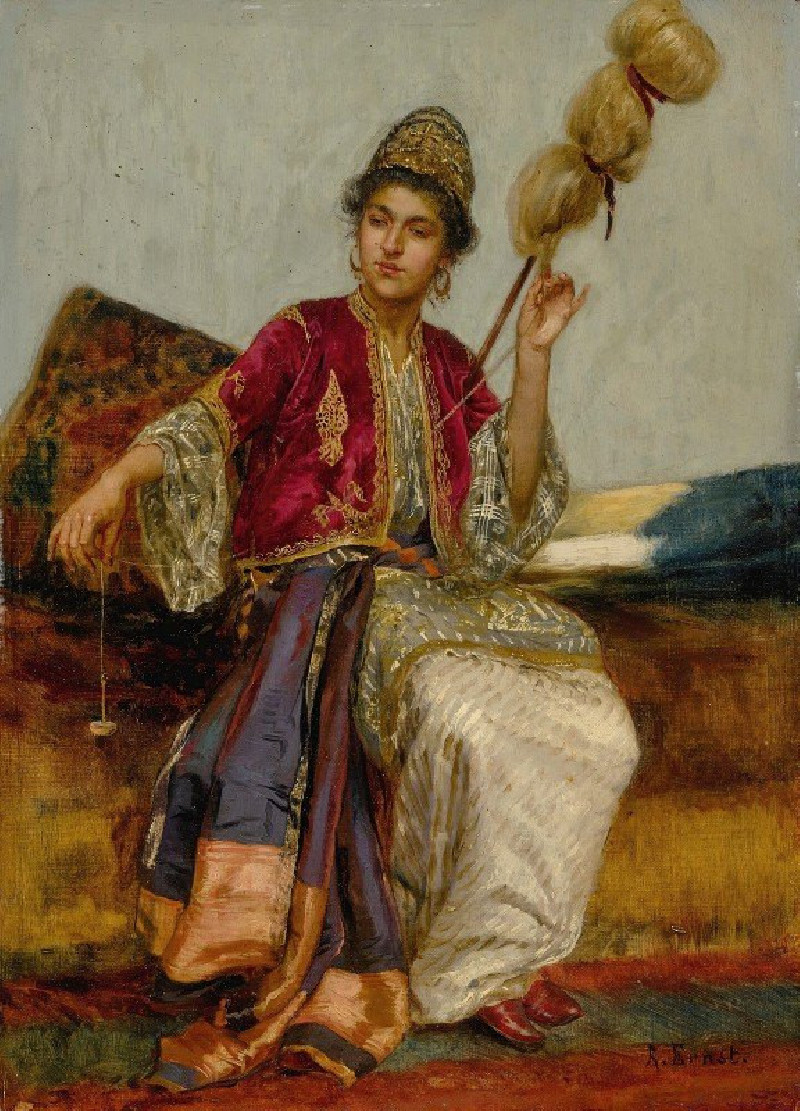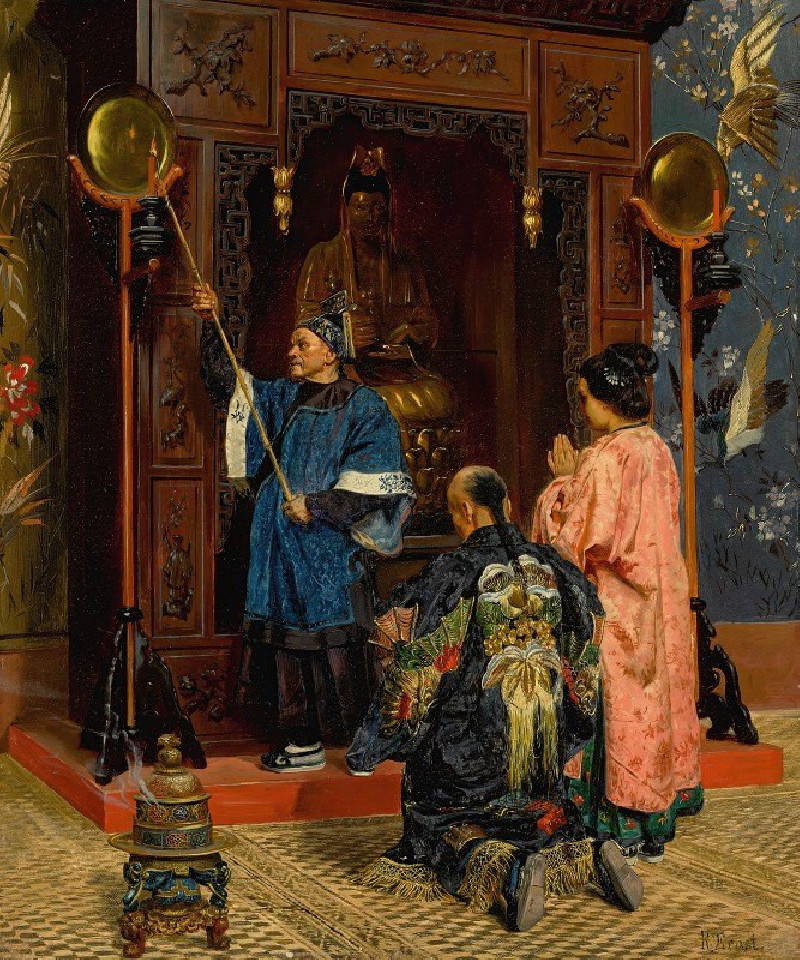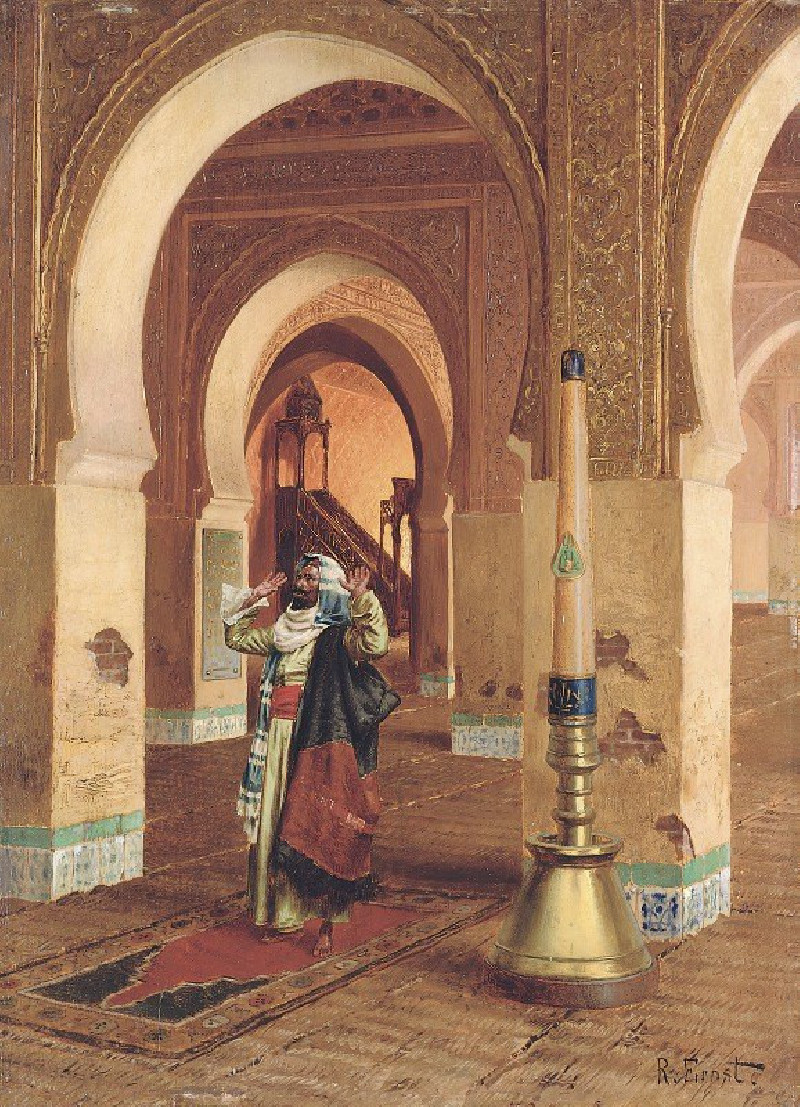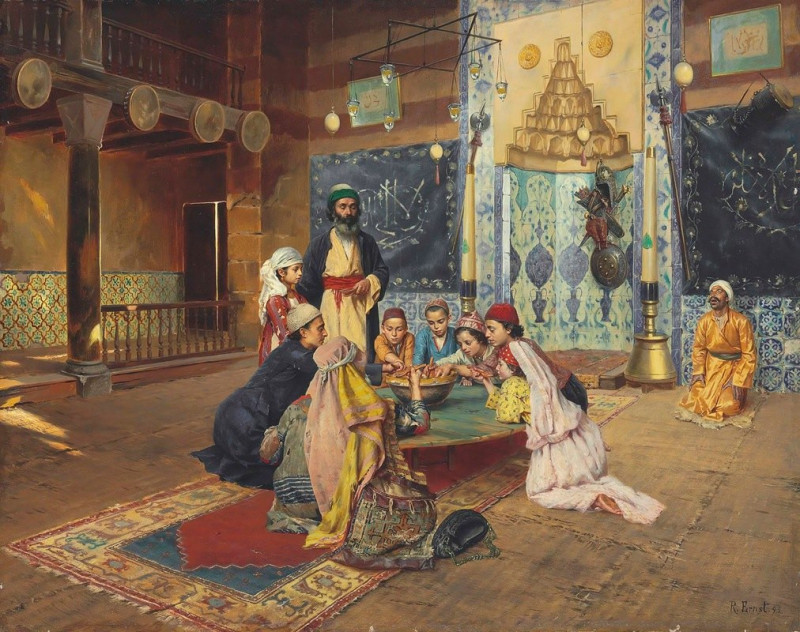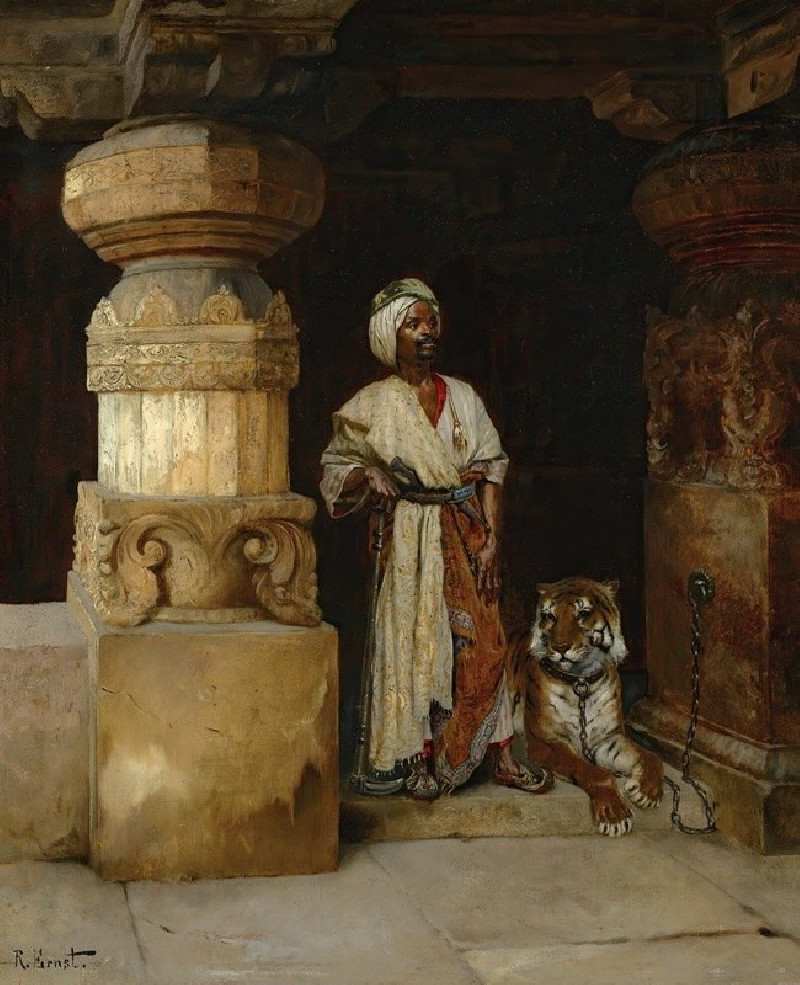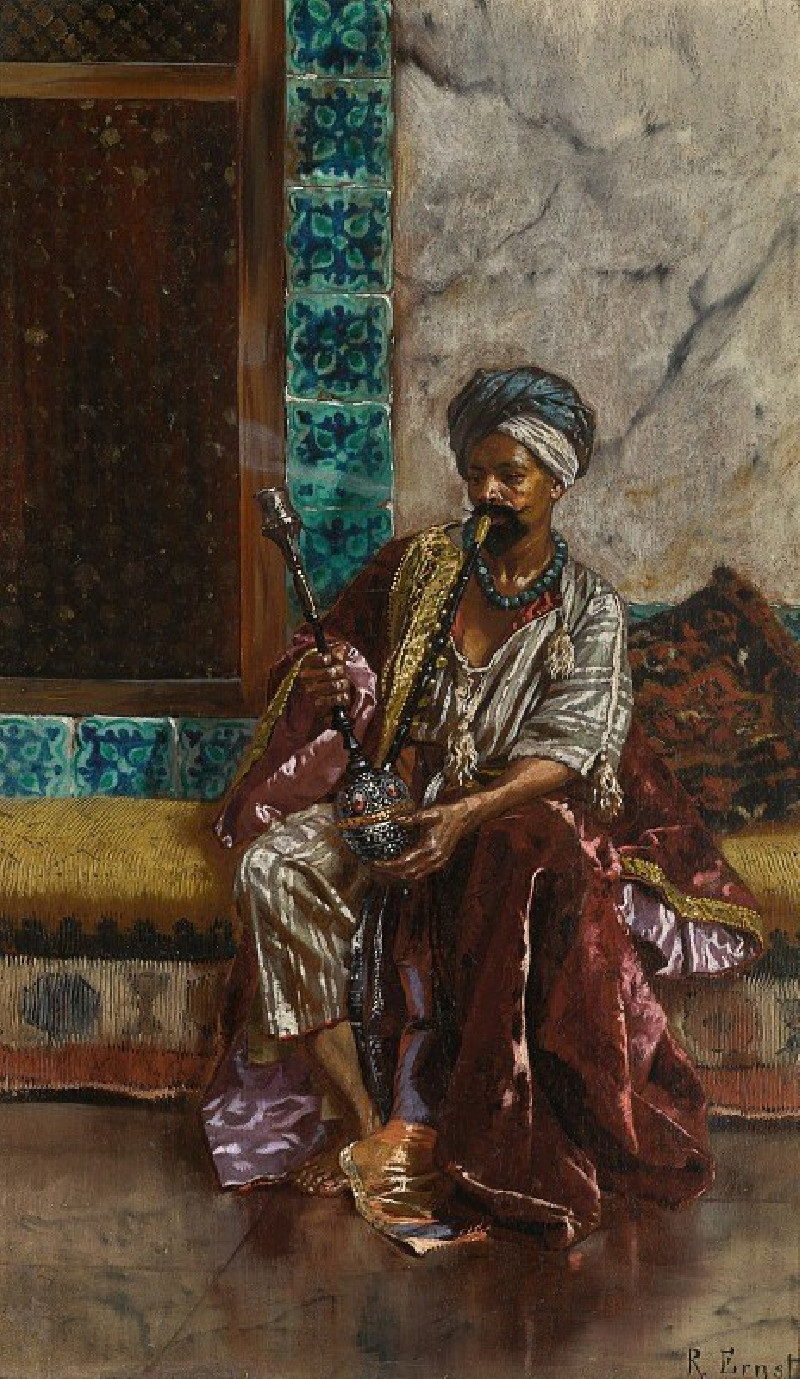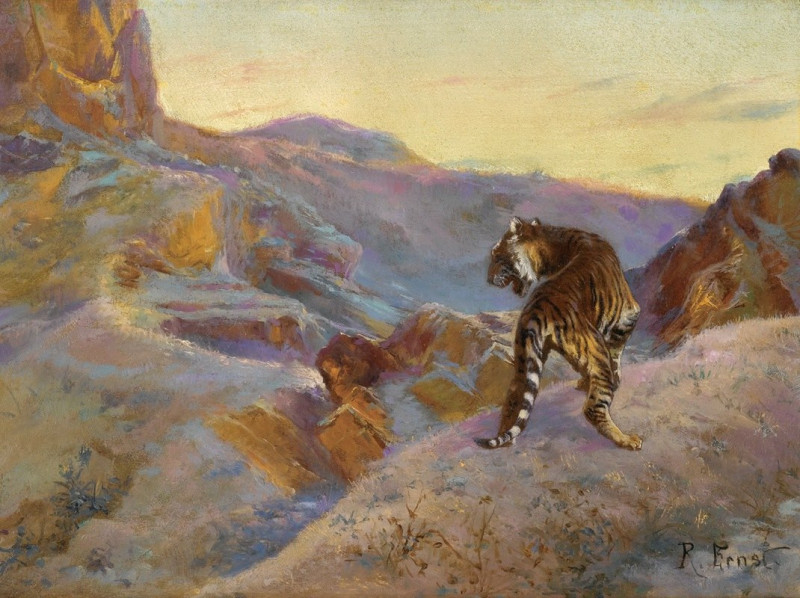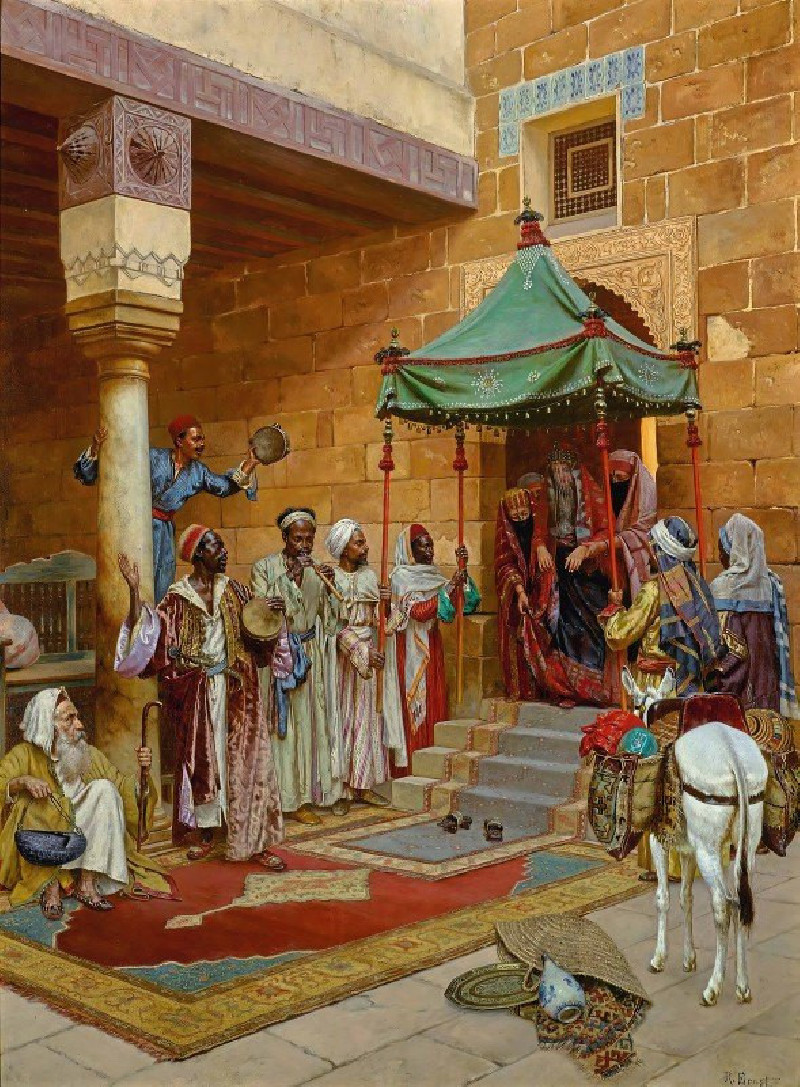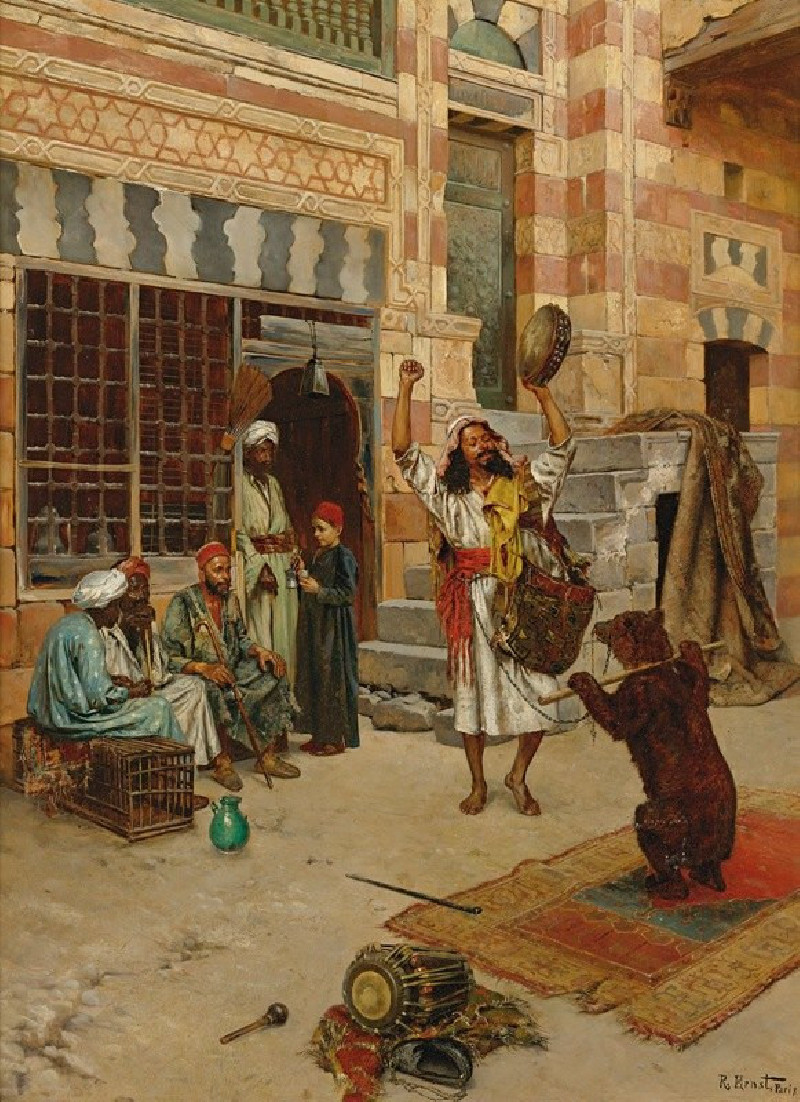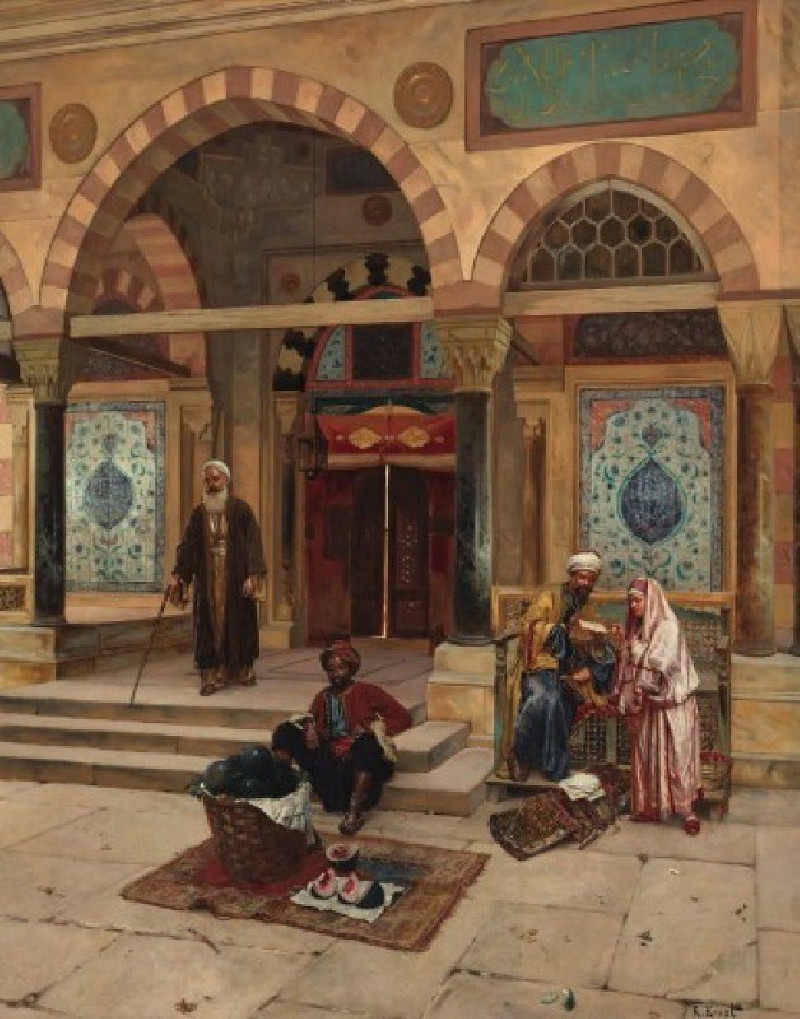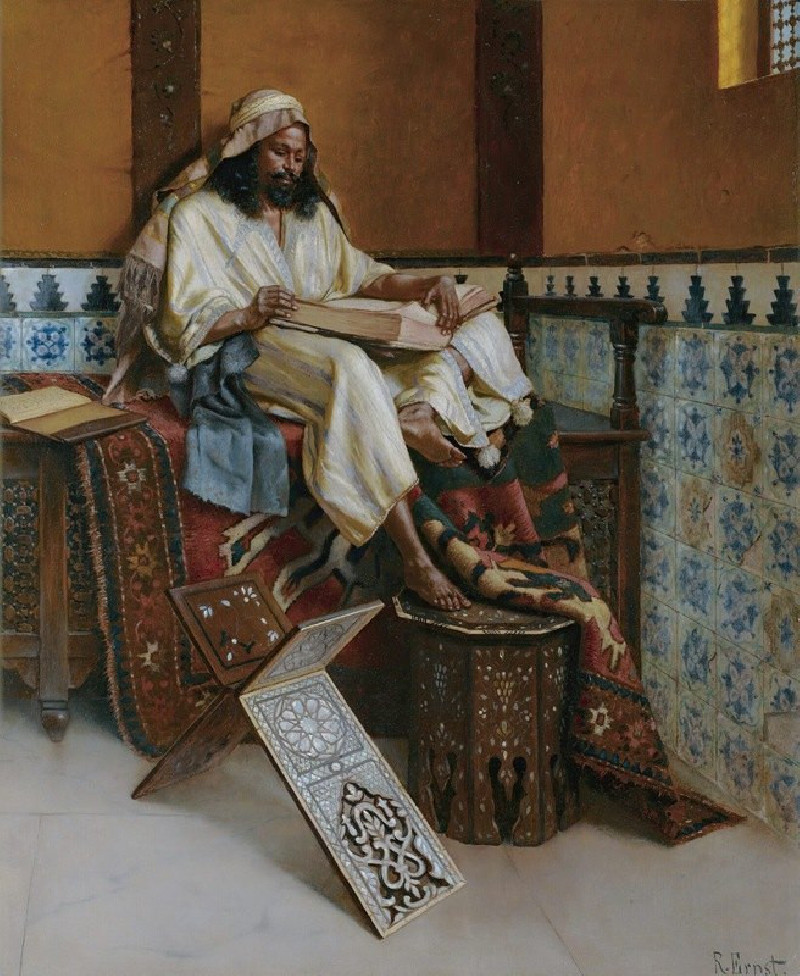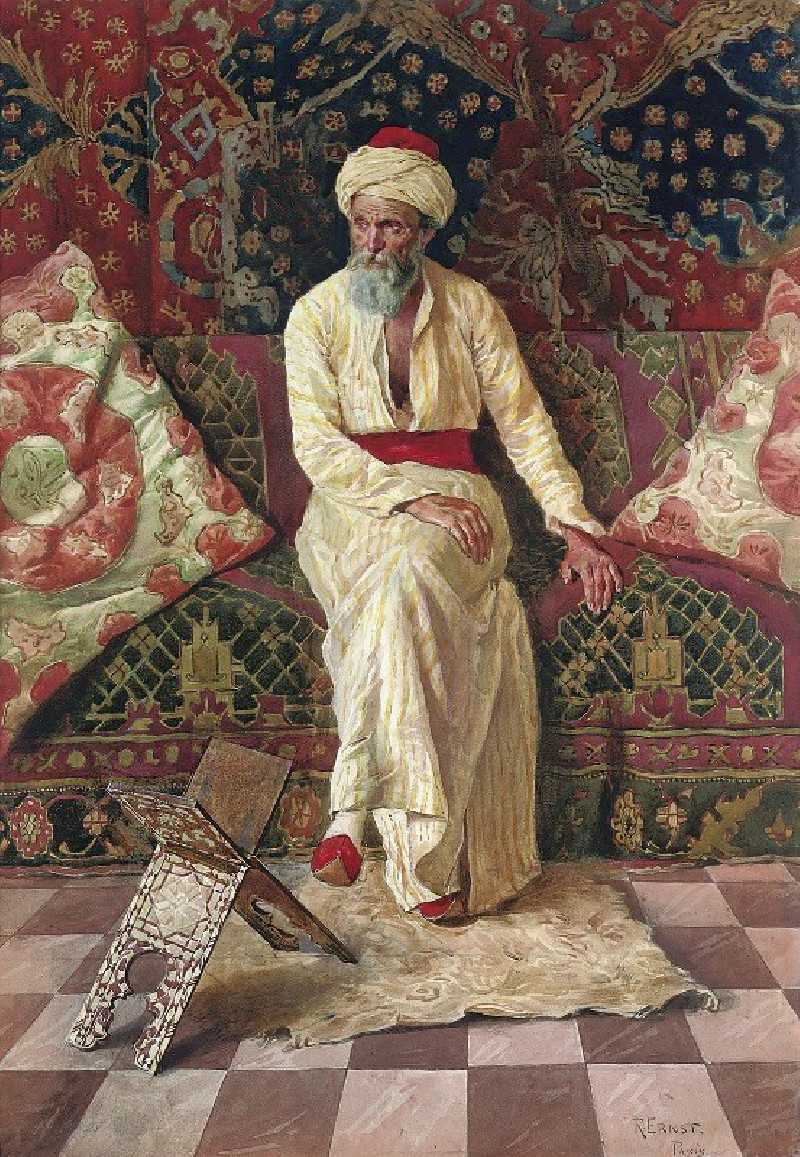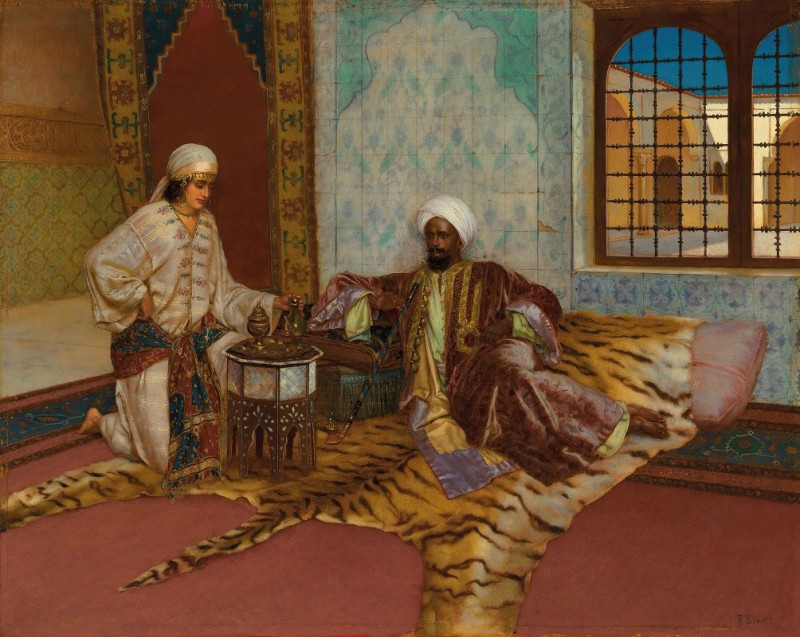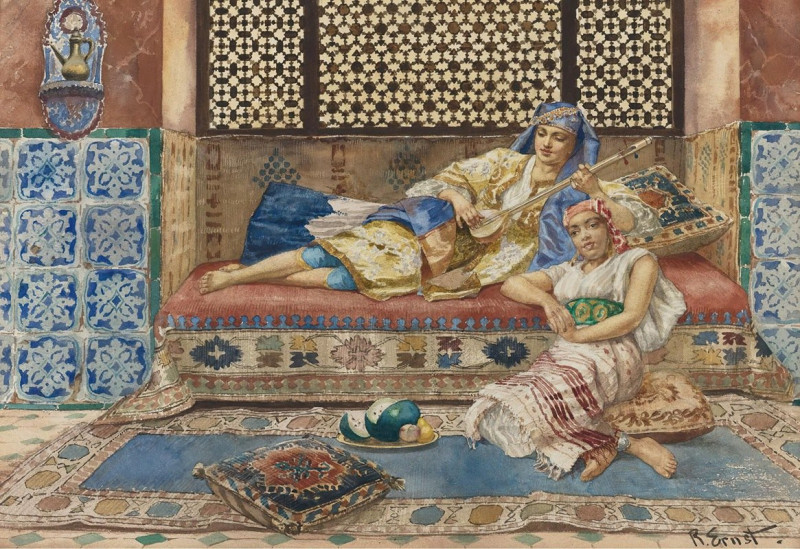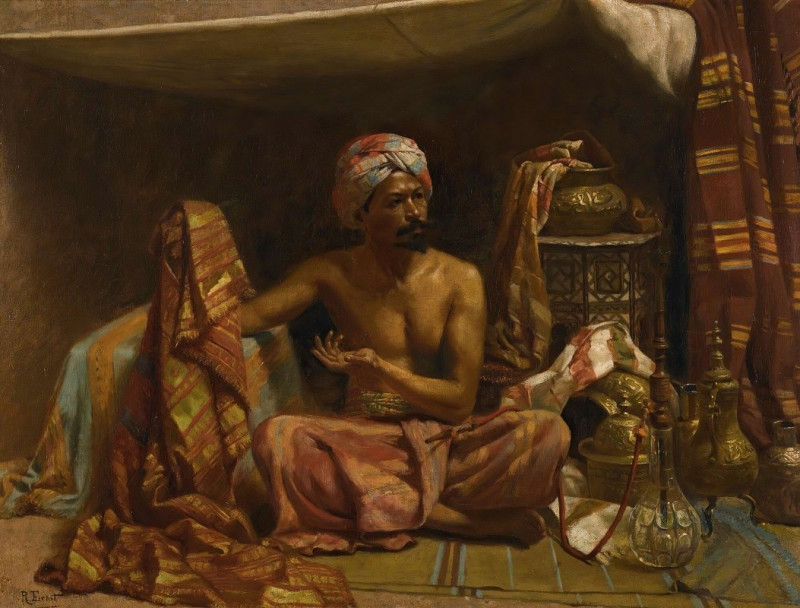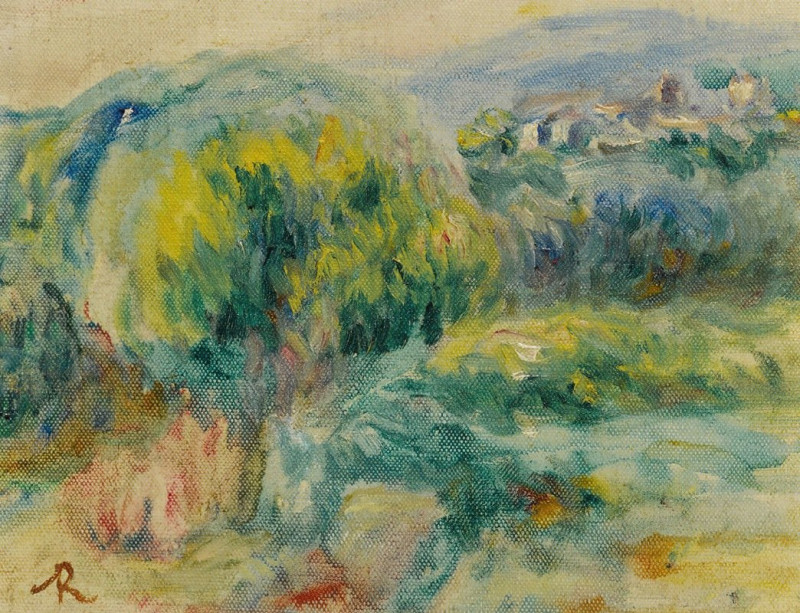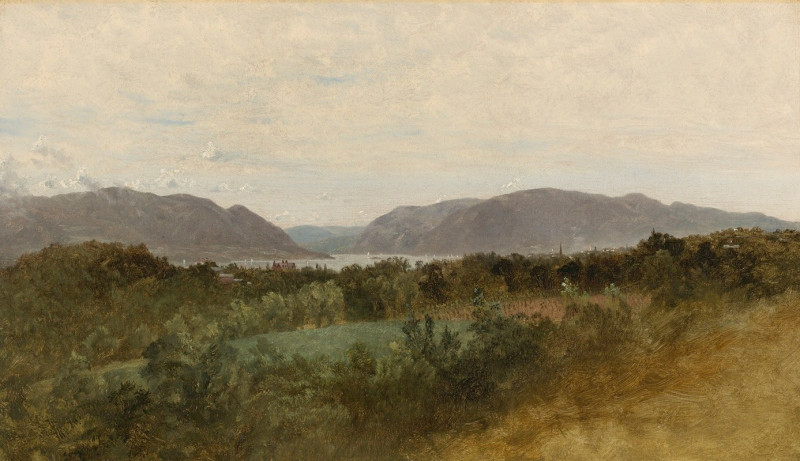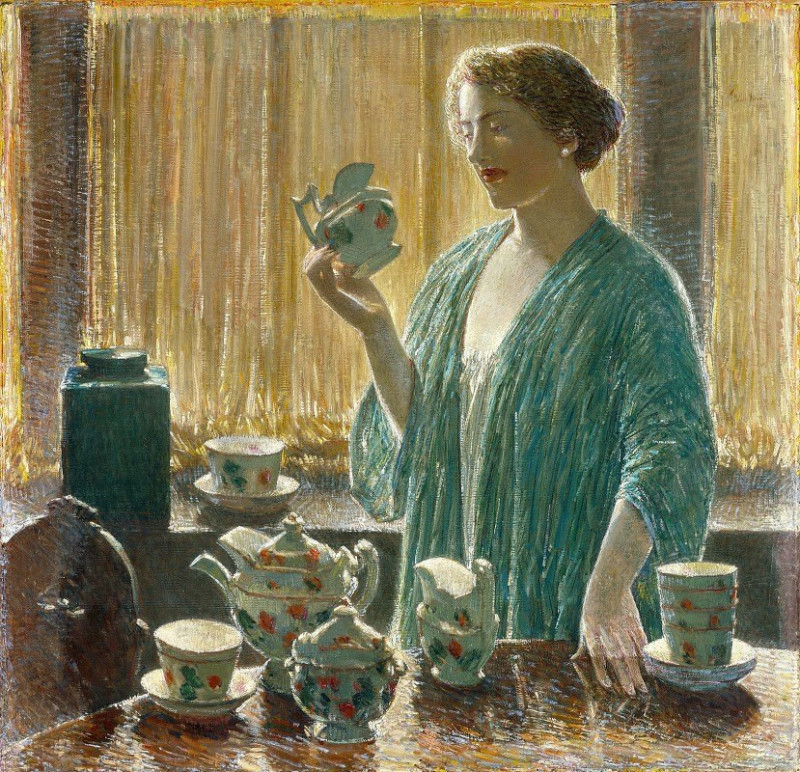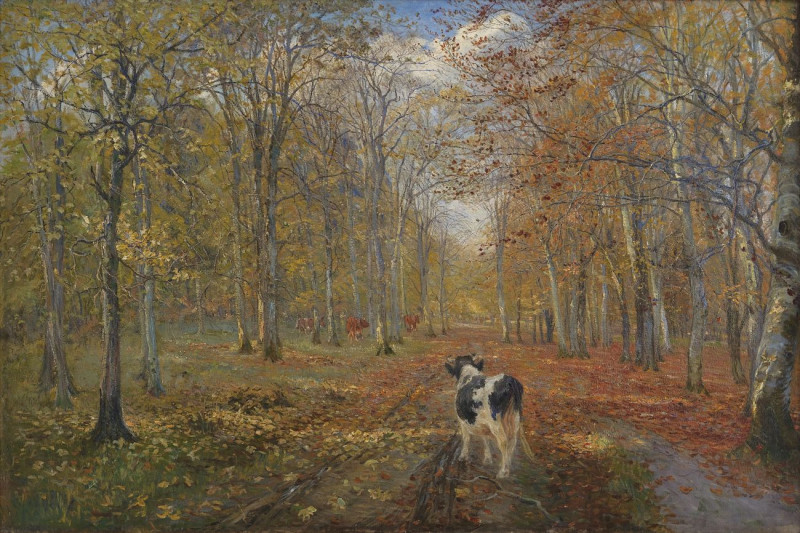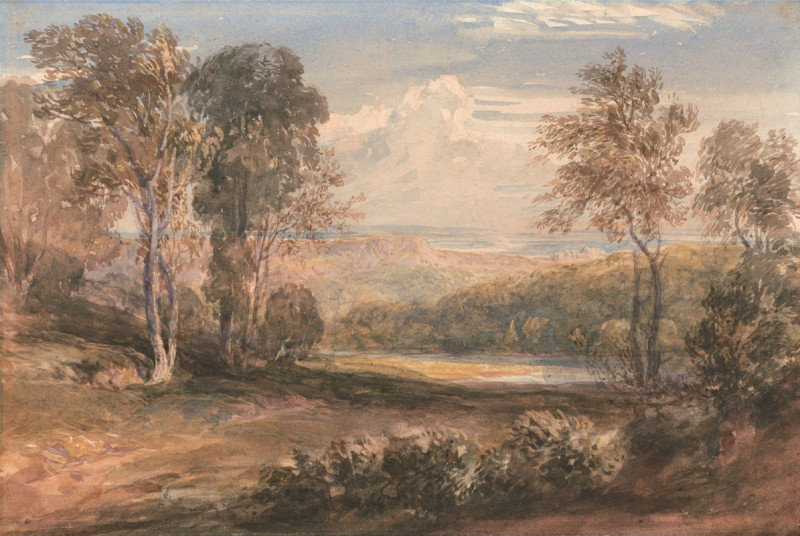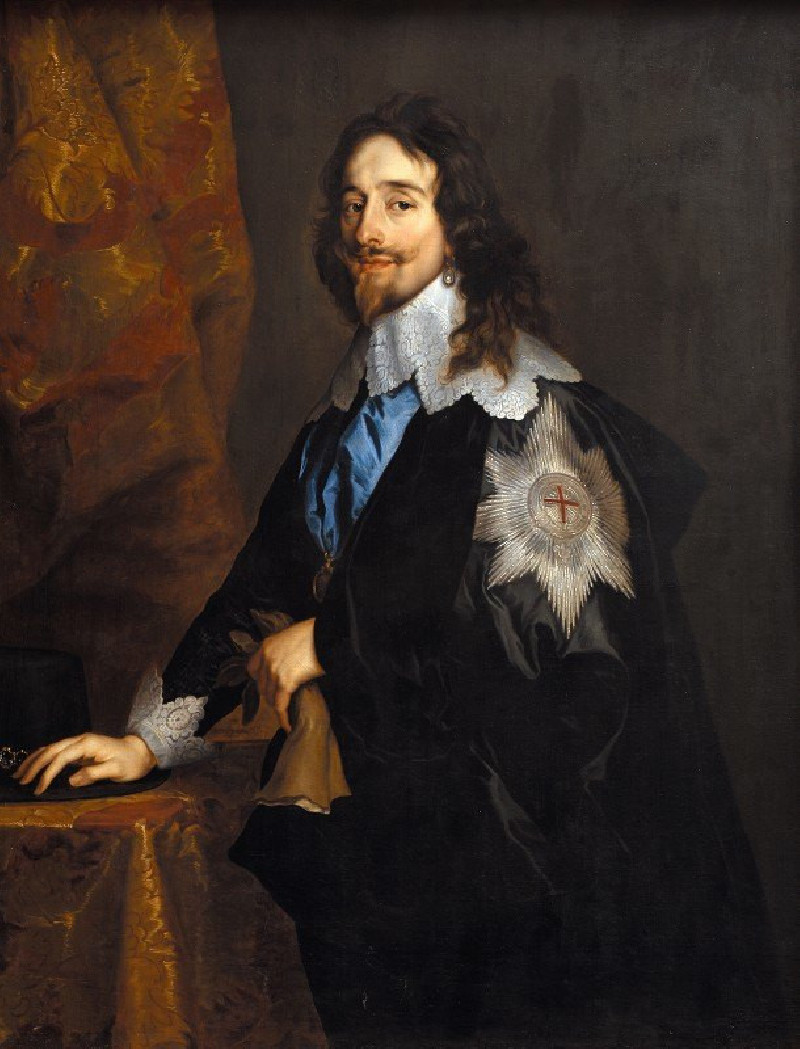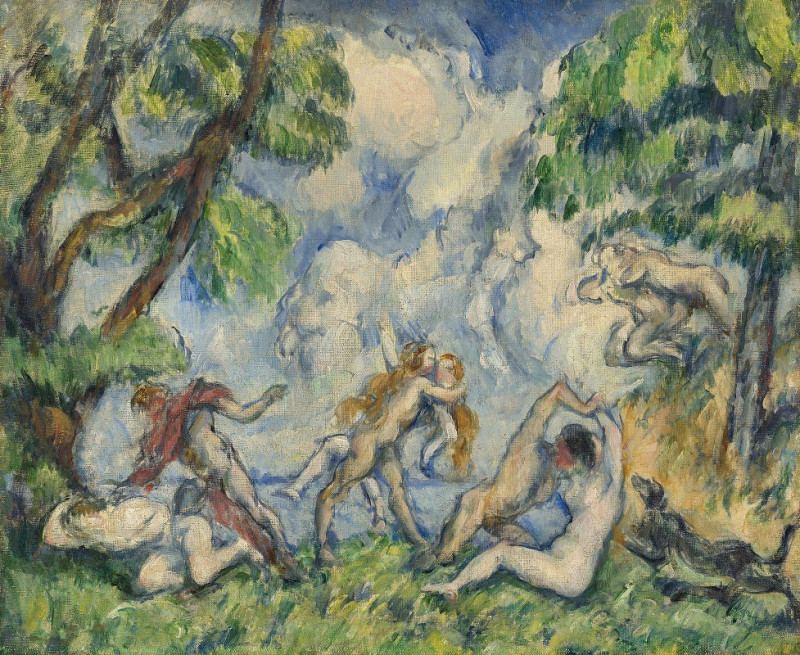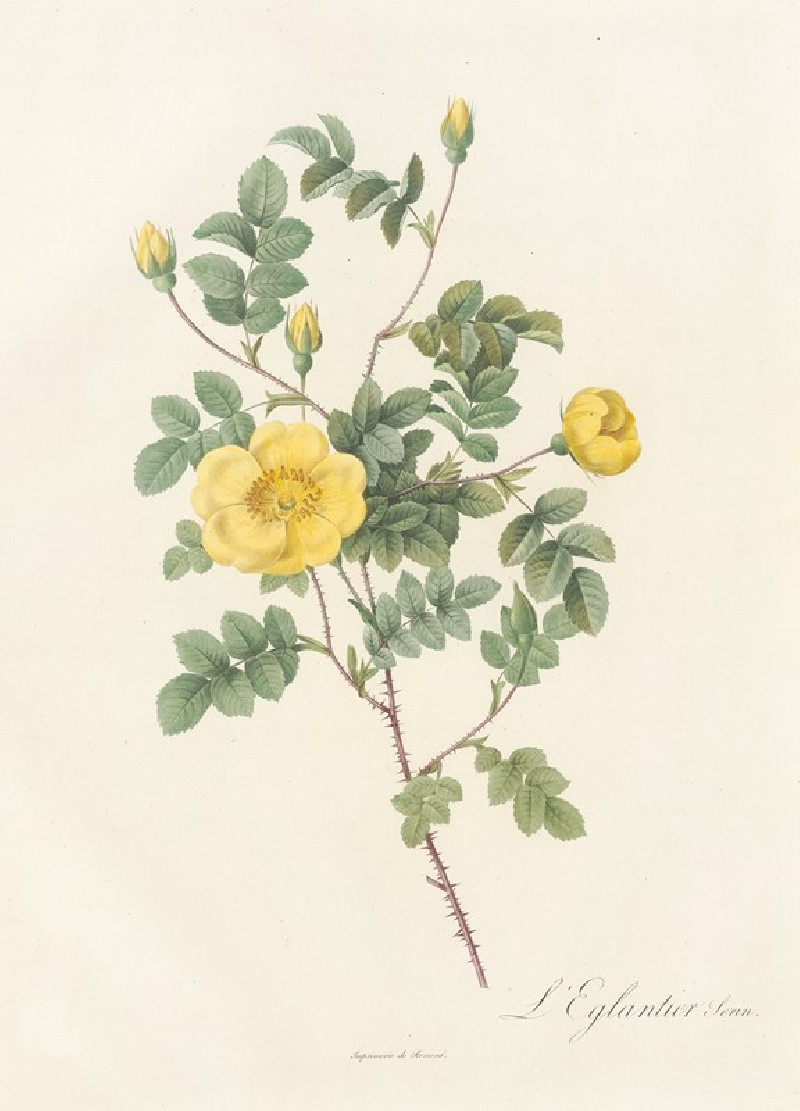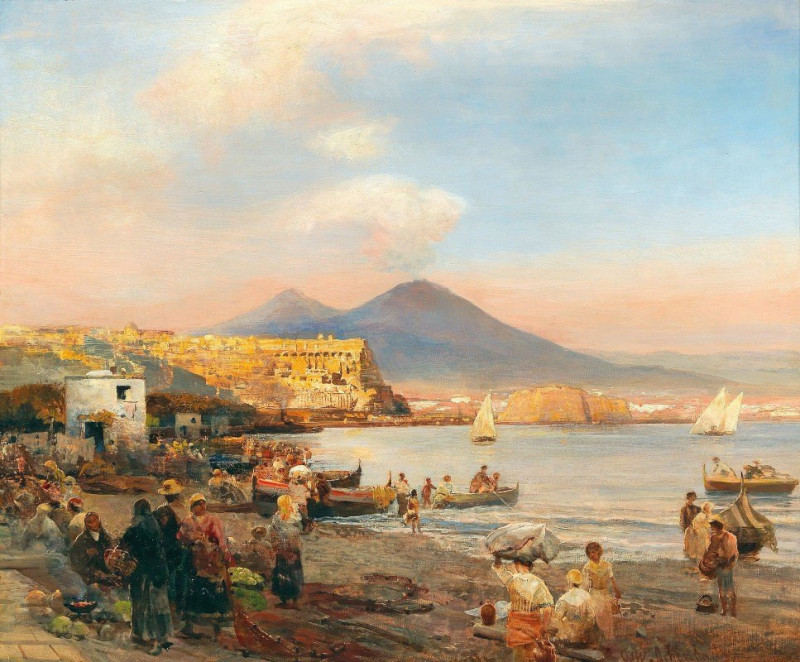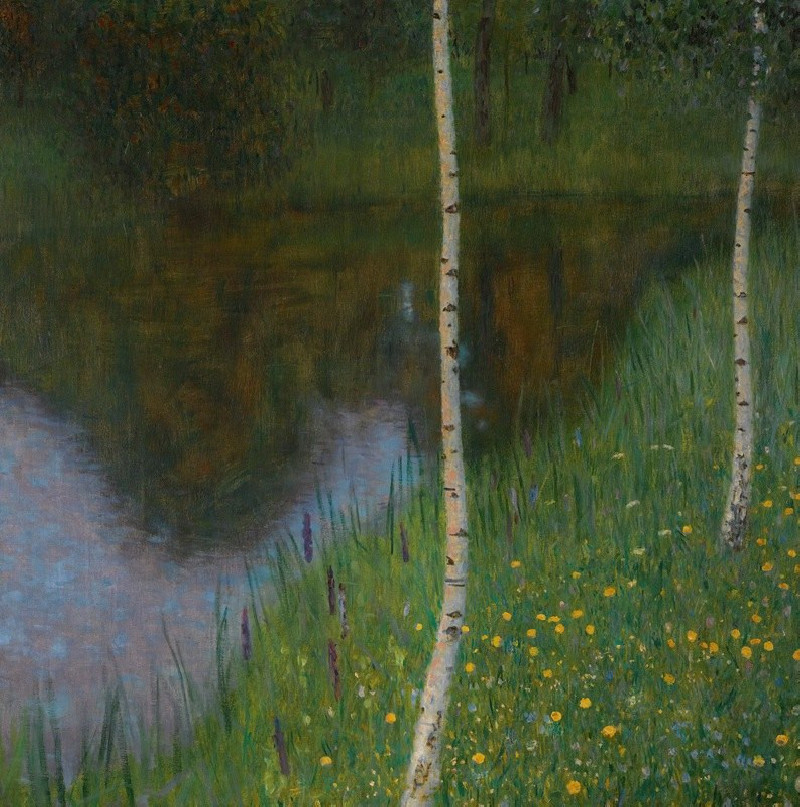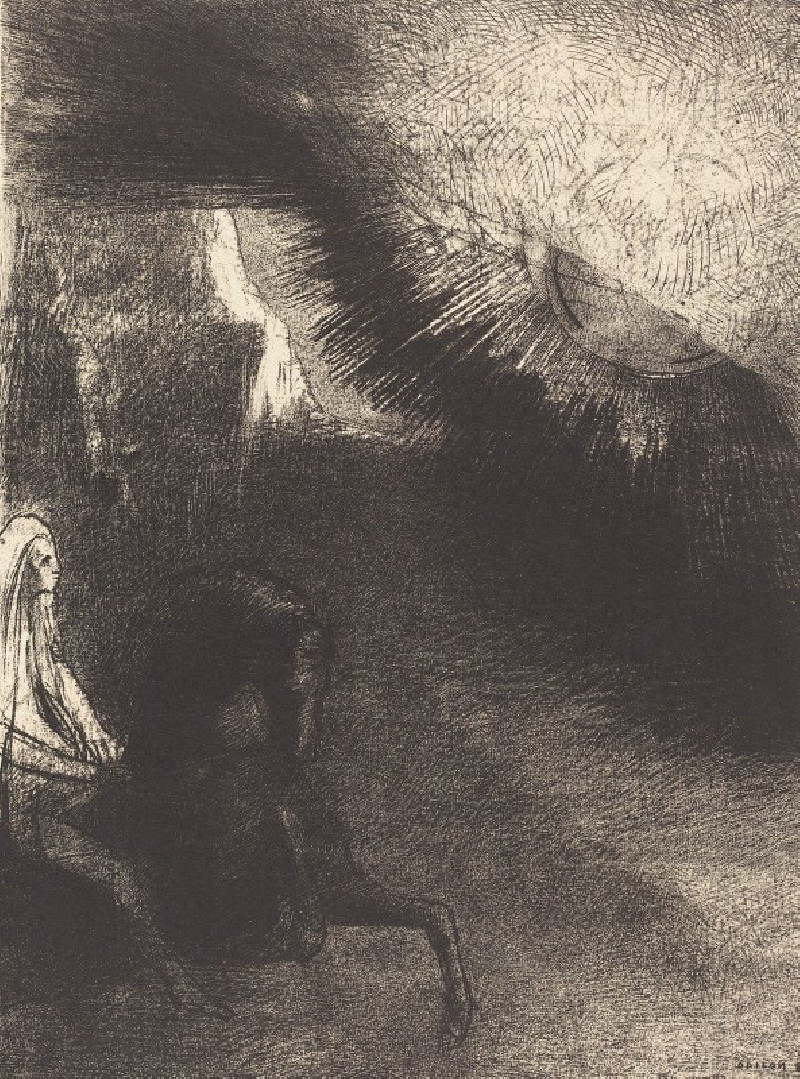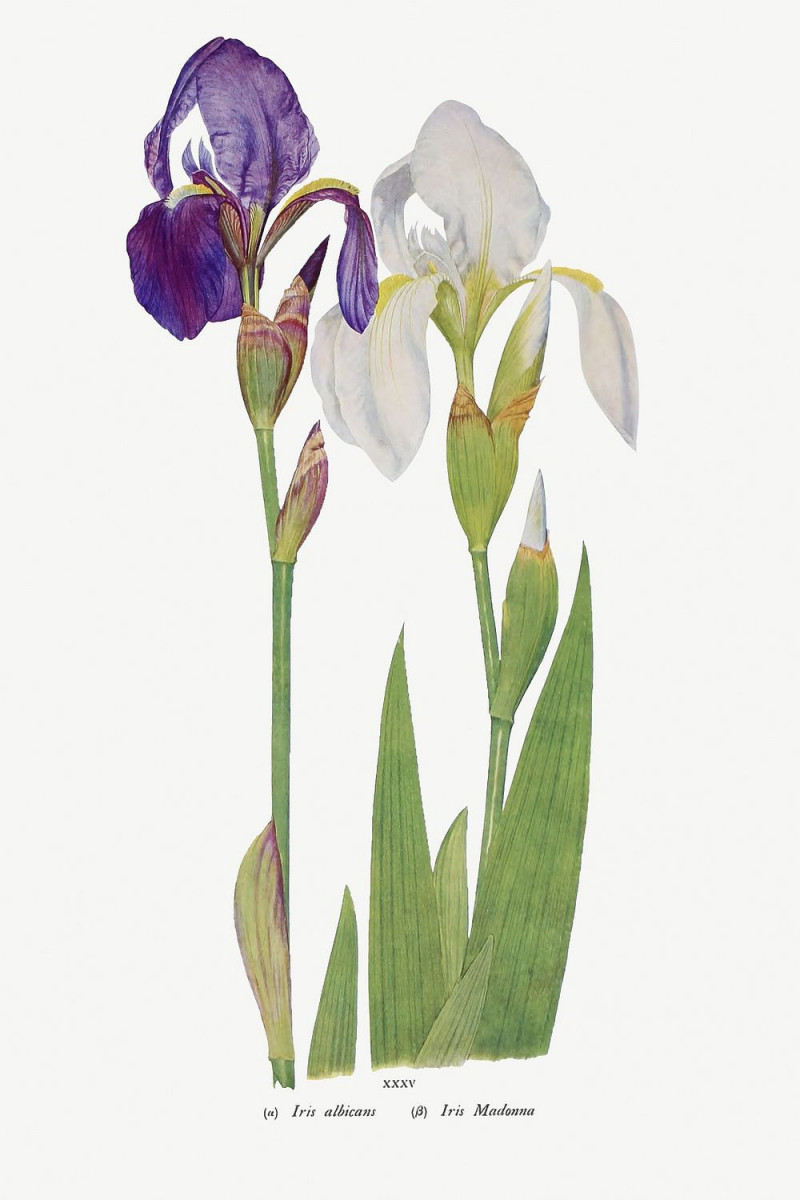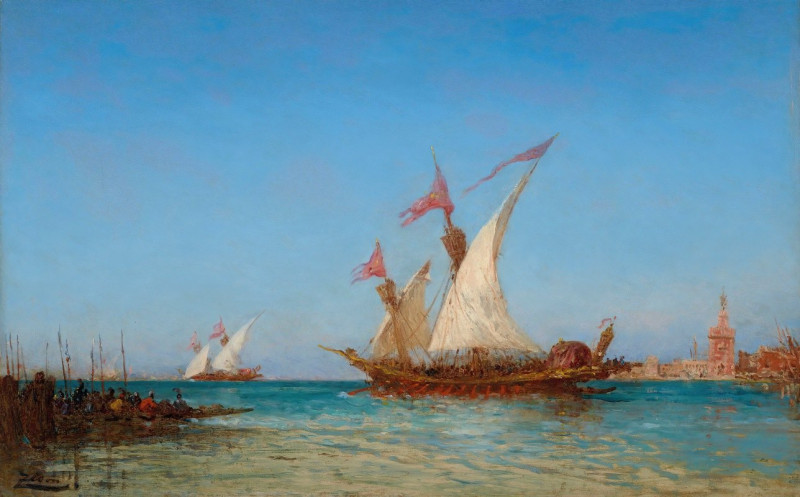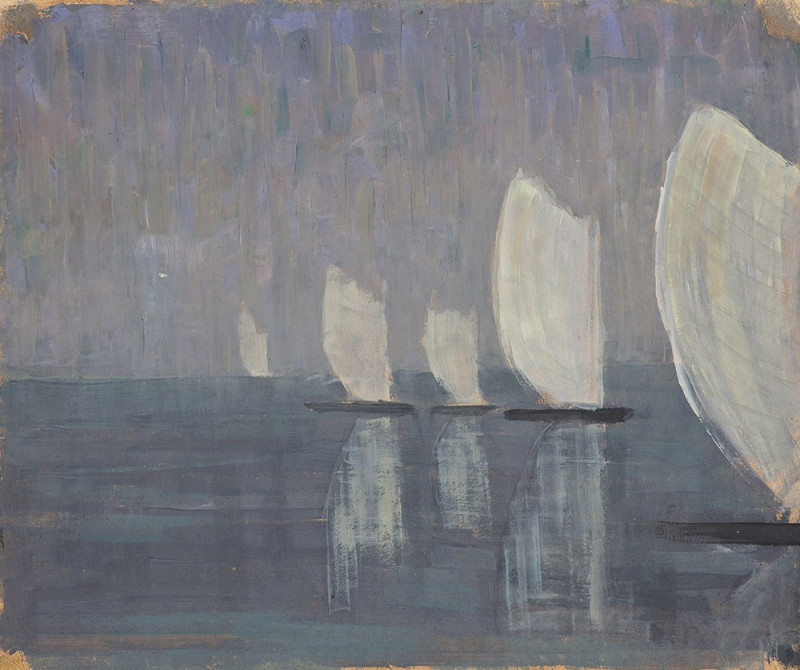The favourite
Technique: Giclée quality print
Recommended by our customers
More about this artwork
Rudolf Ernst's captivating painting "The Favourite" transports viewers into an opulently decorated space resonating with the exotic allure of the Orientalist aesthetic. The artwork features two figures, immersed in a tender yet regal interaction, set against a rich backdrop of ornate tiles, lush textiles, and vibrant flora.At the forefront is a woman draped in a lavish costume that showcases the artist's attention to texture and color. Her attire, embellished with intricate patterns and golden hues, reflects the luxuriousness often associated with Eastern royalty. She holds herself with a dignified grace that is further accentuated by her thoughtful expression and the delicacy of her pose.Kneeling before her, a younger figure plays a traditional wind instrument, the soulful melodies seemingly underpinning the silent communications between the two. This musician, also dressed in textured garments, adds a dynamic element to the scene with her focused posture and the active engagement in her art.Ernst's use of light not only highlights the rich fabrics and architectural details but also creates a sense of warmth and intimacy that envelops the scene. The placement of elements like the ornate vase overflowing with flowers and the subtly placed decorative items enhance the narrative of serene luxury and cultured leisure."The Favourite" by Rudolf Ernst not only stands as a testament to the artist's mastery over detail and atmosphere but also serves as a window into the romanticized vision of Eastern culture that characterized much of Orientalist art during this period.
Delivery
Returns
Rudolf Ernst was an Austro-French painter, printmaker and ceramics painter who is best known for his orientalist motifs. He exhibited in Paris under the name "Rodolphe Ernst".
He was the son of the architect Leopold Ernst and, encouraged by his father, began studies at the Academy of Fine Arts Vienna at the age of fifteen. He spent some time in Rome, copying the old masters, and continued his lessons in Vienna with August Eisenmenger and Anselm Feuerbach.

